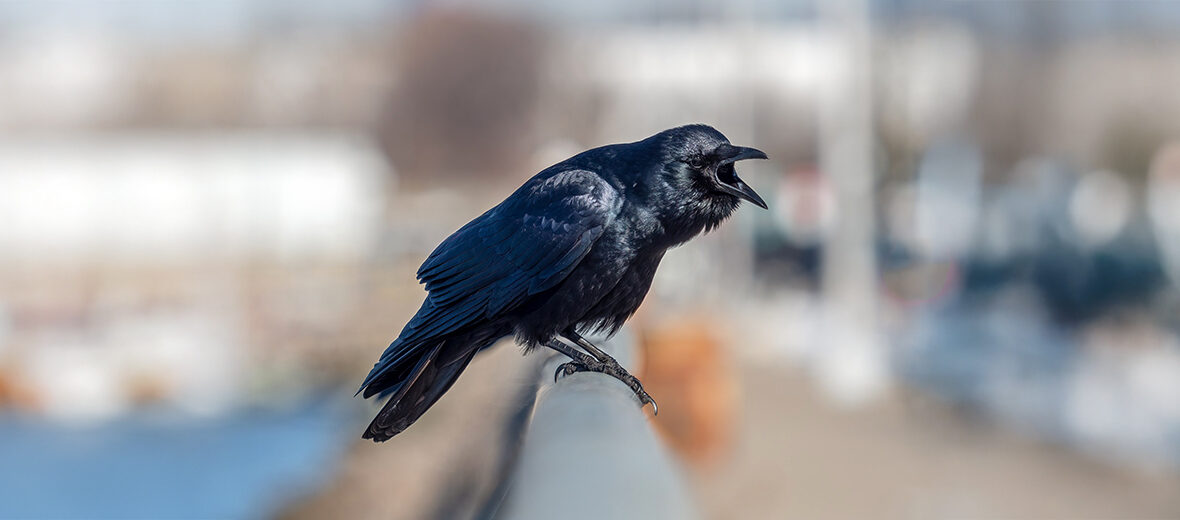
The fish crow gets its name from their diet of mostly aquatic animals. These birds can be distinguished from the American crows as they are smaller and have silkier feathers. They can be found throughout eastern and southeastern United States, as well as Canada. With no real threats to concern them, sans perhaps water pollution, these birds are listed by the IUCN as Least Concern. Their population trend is listed as increasing as well.
First the Stats…
Scientific name: Corvus ossifragus
Weight: Up to 11.6 ounces
Length: Up to 15.8 inches
Wingspan: Up to 33.1 inches
Lifespan: Up to 14.5 years
Now on to the Facts!
1.) They were first described by the Scottish ornithologist Alexander Wilson in 1812.
2.) Their binomial hails from Latin; Corvus which means “raven”, while ossifragus means “bone-breaker”.
3.) DNA sequencing has indicated that these critters are most closely related to the palm crow and the Jamaican crow, with the 3 species forming a Nearctic clade. This clade is in relation to North America.
4.) The call of these birds has been described as a nasal “ark-ark-ark” or a begging “waw-waw”. They also produce a nasal “nyuh unh” and a single call that sounds like “cahrrr”.
5.) They prefer coastal marshes and beaches, inland lakes and marshes, rivers, river banks, and the adjacent land surrounding these habitats.
But wait, there’s more on the fish crow!
6.) Crabs, shrimps, various aquatic invertebrates, stranded fish, live fish, bird eggs, nestlings of birds, small reptiles, various fruits, peanuts, and grains, as well as human scraps when made available are all on the menu.
7.) Their nest is typically constructed high up in trees and usually situated in loose colonies with other fish crow nests.
Did you know…?
These crows appear to be more resistant to West Nile virus than the American crow. Survival rates of up to 45% have been reported for fish crows, compared with nearly 0% for American crows.
8.) Females lay up to 5 eggs that hatch in up to 19 days.
9.) Chicks fledge in up to 40 days.
10.) Various raptors, raccoons, and rat snakes all prey on either the adults, nestlings, or these crow’s eggs.
Now a Short Fish Crow Video!
Be sure to share & comment below! Also, check out the Critter Science YouTube channel. Videos added regularly!

Want to suggest a critter for me to write about? Let me know here.
Some source material acquired from: Wikipedia & IUCN
Photo credit: Rhododendrites



